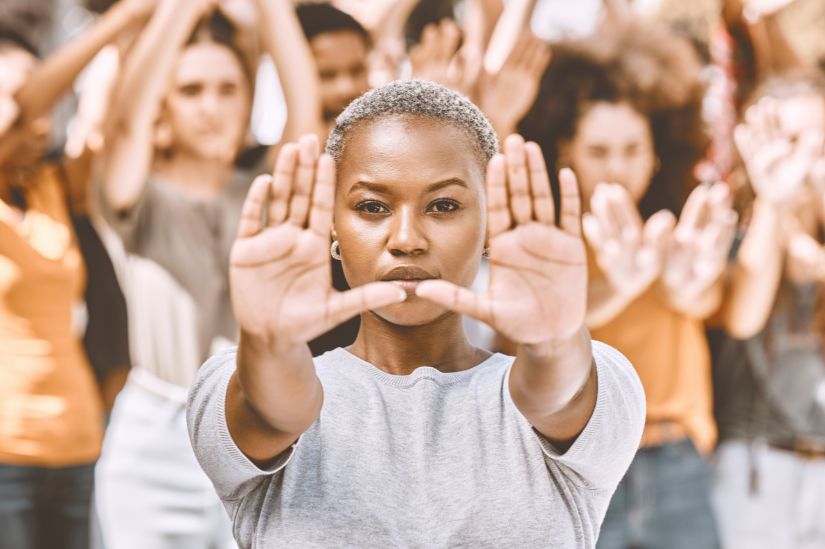As we celebrate another Women’s History Month, it’s an opportune time to reflect on how far we’ve come in the fight for women’s rights. The journey has been long and arduous, from the battle for suffrage to the ongoing struggle for equal pay and representation. But the strides made by generations of strong women are undeniable.

Let’s turn back the clock a few centuries. Imagine a world where women couldn’t own property, vote, or even pursue higher education. Sadly, this was the reality for far too long. The fight for fundamental rights began with voices like Mary Wollstonecraft, who penned the groundbreaking “A Vindication of the Rights of Woman” in 1792, challenging the very foundation of female subjugation.
The tireless efforts of suffragettes like Susan B. Anthony and Elizabeth Cady Stanton paved the way for the hard-won victory of the 19th Amendment in 1920, granting women the right to vote. This pivotal moment was a testament to the power of collective action.
In the following decades, women made significant inroads into areas previously dominated by men. Title VII of the Civil Rights Act of 1964 prohibited gender discrimination in employment, opening doors to countless women’s careers. Educational equality progressed with Title IX in 1972, ensuring equal opportunities for girls in schools and sports.
Despite these persistent challenges, the evolution of women’s rights is a compelling narrative of determination and progress. Today, women are excelling in every field imaginable. We have seen female CEOs shattering records, women astronauts reaching for the stars, and record numbers of women holding elected office. The very image of strength, resilience, and ambition is increasingly linked to the female form.
Yet, complacency is not an option. Every Women’s History Month serves as a reminder that the fight for full equality is ongoing. We must continue challenging outdated norms, pushing for legislation that protects women’s rights, and empowering girls and young women to reach their full potential.
However, the fight for parity is far from over. The wage gap persists, with women earning less than their male counterparts. The “glass ceiling” remains a stubborn reality in many industries, hindering women’s advancement to top leadership positions. Issues like reproductive rights and gender-based violence continue to affect women disproportionately.
These are some of the movements that took place in history
Dec. 10, 1869: The legislature of the territory of Wyoming passes America’s first woman suffrage law, granting women the right to vote and hold office. In 1890, Wyoming was the 44th state admitted to the Union and became the first state to allow women the right to vote.
May 15, 1869: Susan B. Anthony and Elizabeth Cady Stanton founded the National Woman Suffrage Association, which coordinated the national suffrage movement. In 1890, the group teamed with the American Woman Suffrage Association to form the National American Woman Suffrage Association.
Aug. 18, 1920: Ratification of the 19th Amendment to the U.S. Constitution is completed, declaring “the right of citizens of the United States to vote shall not be denied or abridged by the United States or any State on account of sex.”
Dec. 1, 1955: Black seamstress Rosa Parks refuses to give up her seat to a white man on a bus in Montgomery, Ala. The move helps launch the civil rights movement.
June 10, 1963: President John F. Kennedy signed the Equal Pay Act into law, prohibiting sex-based wage discrimination between men and women performing the same job in the same workplace.
July 2, 1964: President Lyndon B. Johnson signed the Civil Rights Act into law; Title VII bans employment discrimination based on race, religion, national origin, or sex.
June 23, 1972: Title IX of the Education Amendments is signed into law by President Richard Nixon. It states, “No person in the United States shall, based on sex, be excluded from participation in, be denied the benefits of, or be subjected to discrimination under any education program or activity receiving Federal financial assistance.”
July 7, 1981: Sandra Day O’Connor is sworn in by President Ronald Reagan as the first woman to serve on the U.S. Supreme Court. She retired in 2006 after serving for 24 years.
June 18, 1983: Flying on the Space Shuttle Challenger, Sally Ride becomes the first American woman in space.
Sept. 13, 1994: Clinton signs the Violence Against Women Act as part of the Violent Crime Control and Law Enforcement Act, providing funding for programs that help victims of domestic violence, rape, sexual assault, stalking, and other gender-related violence.
Jan. 4, 2007: U.S. Rep. Nancy Pelosi (D-Calif.) becomes the first female speaker of the House. In 2019, she reclaimed the title, becoming the first lawmaker to hold the office two times in more than 50 years.
July 26, 2016: Hillary Clinton becomes the first woman to receive a presidential nomination from a major political party.
January 20, 2021: Kamala Harris is sworn in as the first woman and first woman of color vice president of the United States.
As we celebrate Women’s History Month here at Impact TV, we invite you to explore our special programming highlighting the journeys of changemakers and trailblazers. Visit schedule to find documentaries, movies, and insightful discussions that delve into the past, present, and future of women’s rights.
Notifications